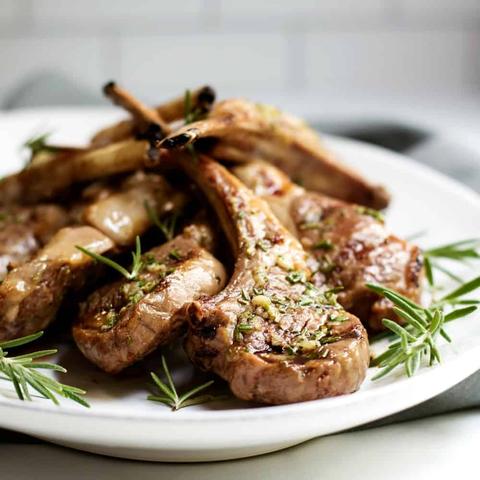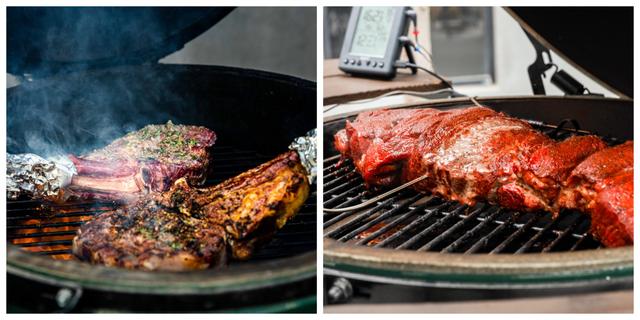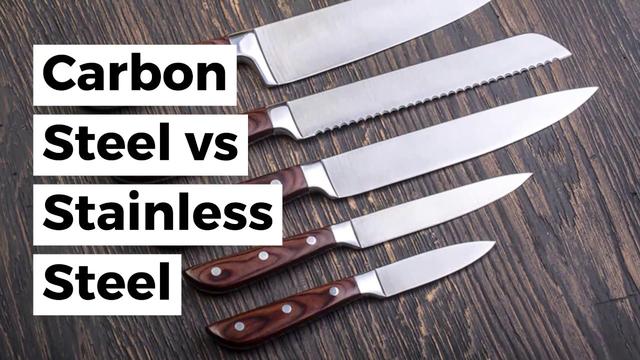
“Stainless Steel vs Carbon Steel Knife: Unveiling the Ultimate Blade Showdown. Discover the defining characteristics, pros, and cons of these two popular knife materials to help you make an informed choice for your culinary adventures or outdoor pursuits.”
Carbon Kitchen Knives vs Stainless Steel Knives
When it comes to choosing between carbon steel knives and stainless steel knives, there are several important differences to consider. Stainless steel knives are lower maintenance and can handle various conditions, including hot, wet, or acidic ingredients. They can be left in the sink or dishwasher without immediately cleaning off food residue. On the other hand, carbon steel knives require more care and should be washed and dried immediately after use to prevent staining and damage. They also need to be oiled with mineral oil before storage to protect them from rust.

In terms of sharpness, carbon steel knives hold their edge for longer than stainless steel knives. While stainless steel tends to be softer and loses its sharpness quicker, carbon steel stays sharp for years without needing frequent sharpening. However, carbon steel is more fragile and can chip if mishandled or dropped.
Another difference is the appearance of the blades. Stainless steel knives maintain a gleaming look while carbon steel knives develop a patina over time, which is a slight discoloration but also acts as a protective non-stick layer.
Lastly, stainless steel knives are not sensitive to acids like onions or tomatoes, while carbon steel knives have a “break-in” period where a patina forms on the blade surface.
What is Carbon Steel?

All steel is iron that has carbon inserted into its molecular structure. All steel is, therefore, technically carbon steel. But what we usually call carbon steel is actually specifically high carbon steel. Low carbon steel is more ductile and less hard – more like the original iron. High carbon steel is harder and more brittle, although it can be treated to reduce brittleness.
Kitchen knives will use grades with high amounts of carbon to give the knife hardness and strength. However, this requires very good heat treating to ensure that the knife is neither too brittle nor too ductile. Any decent knife will have received this heat treatment, so there is no need to worry about buying a brittle knife by mistake.
Carbon steel knives require more care and maintenance compared to stainless steel knives. After each use, the blade should be washed immediately and dried with a cloth to prevent staining and damage from food residue and water. It is also recommended to rub the blade with mineral oil before storage to protect it from rust.
Carbon steel knives stay sharp for longer than stainless steel knives due to their hardness. They are less common in kitchens because they require greater care to prevent rusting. However, if you prioritize having a perfectly sharp knife that can cut through bone or effortlessly slice through tomatoes, then carbon steel knives are the better option.
The choice between carbon steel and stainless steel knives depends on your lifestyle and priorities in the kitchen. If you are meticulous and careful in your cooking, carbon steel knives would be perfect for you. However, if you prefer a knife that requires less maintenance and care, stainless steel knives may be more suitable.
What is Stainless Steel?
Stainless steel is a type of steel that contains carbon as well as other iron-based alloys. The key characteristic of stainless steel is its ability to resist corrosion and staining, making it ideal for use in kitchen knives. Chromium is the element in stainless steel that prevents rusting and heat damage, as it is not susceptible to oxidation. Stainless steel knives are known for being low maintenance and can withstand various conditions, including exposure to hot, wet, or acidic ingredients.
There are several important differences between stainless steel knives and carbon steel knives. One major difference is the maintenance required for each type of knife. Stainless steel knives are considered lower maintenance, as they can be left in the sink or dishwasher without immediate cleaning. On the other hand, carbon steel knives require more care and should be washed and dried immediately after use to prevent staining and damage.
Another difference is the sharpness retention of the blades. Carbon steel knives tend to stay sharp for longer periods compared to stainless steel knives, making them a popular choice among chefs who value precision cutting. However, carbon steel knives are also more fragile and can chip if mishandled.
In terms of appearance, stainless steel knives maintain their gleaming finish over time, while carbon steel picks up discoloration quickly. This may not be an issue for most users but could be less desirable for those seeking picture-perfect knives.
Caring for carbon steel knives involves taking extra steps to protect them from rust and damage. After each use, it is important to wash the blade immediately and dry it thoroughly with a cloth to prevent staining. Rubbing the blade with mineral oil before storage can help further protect against rust. It is also advisable to use a proper cutting board and avoid hard materials like glass or marble, as they can damage the blade.
Carbon steel knives have a “break-in” period during which a patina develops on the blade. This patina acts as a protective non-stick layer and adds character to the knife. However, if not properly cared for during this period, the blade may undergo a corrosive reaction that permanently damages it.
Overall, carbon steel knives require more attention and care compared to stainless steel knives. They are best suited for meticulous individuals who prioritize maintaining sharpness and are willing to invest time in knife maintenance.
The Differences Between Stainless Steel and Carbon Steel
Stainless steel tends to be softer than carbon steel, which leads the knife’s edge to lose its sharpness quicker. On the other hand, carbon steel knives keep their sharpness a lot longer and can go years without needing to be sharpened.
Carbon steel is more fragile than stainless steel and can chip if you drop or mishandle it. Stainless steel knives, on the other hand, are more durable and less prone to damage.
While stainless steel knives stay gleaming, carbon steel picks up discoloration quite quickly. This may not be a problem for most people, but if you’re looking for picture-perfect knives, stainless steel might be a better choice.
Stainless steel knives aren’t sensitive to acids like onions or tomatoes, whereas carbon steel knives may react with acidic ingredients and leave a metallic taste in your food.
Carbon steel knives have a ‘break-in’ period where a patina is formed on the blade. This patina acts as a protective non-stick layer and enhances the knife’s performance. However, if you don’t take good care of your knife during this period, it can lead to permanent damage and changes in the material’s properties.
Caring for Stainless Steel and Carbon Steel Knives
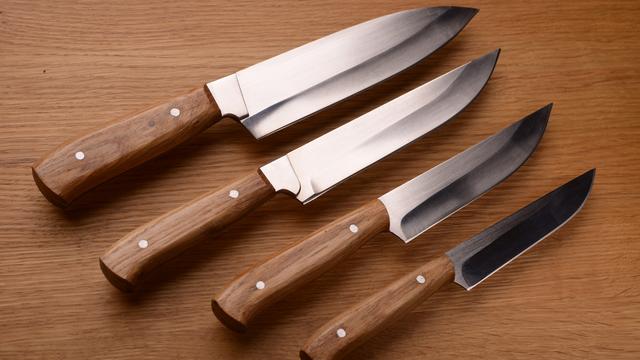
When it comes to caring for stainless steel knives, you’ll find that they are relatively low maintenance. These knives can handle any kitchen condition and can be easily switched between hot, wet, or acidic ingredients. You can even leave them in the sink or dishwasher without worry. However, it is still recommended to clean off food residue as soon as possible to prevent staining and damage to the blade.
On the other hand, carbon steel knives require more delicate care. Despite their strength, they feel delicate and should be treated accordingly. It is essential to wash the blade immediately after use and dry it thoroughly with a cloth. Both food residue and water can stain and damage the blade if left unattended. To protect against rust, you may also want to consider rubbing mineral oil on the blade before storage.
In addition to proper cleaning techniques, using the right cutting board is crucial for carbon steel knives. Avoid hard boards like glass or marble that can potentially damage the blade. It’s important to note that carbon steel knives have a break-in period similar to cast-iron pans. Keeping the knife dry and well-oiled will help develop a patina on the blade, which acts as a protective non-stick layer. Failure to care for your knife during this period can result in permanent damage and changes in its properties.
The Break-in Period of Carbon Steel
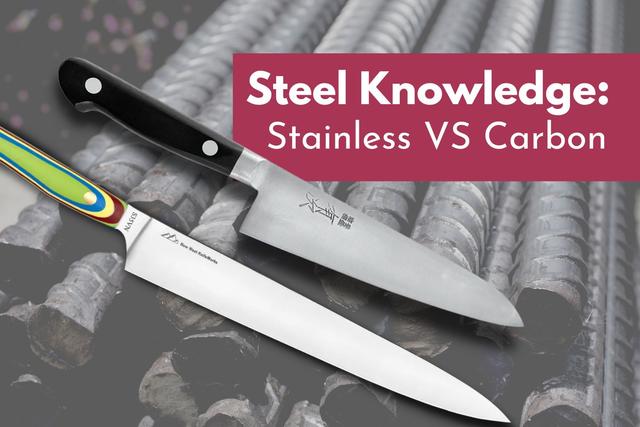
Carbon steel knives have a unique break-in period where a patina is formed on the blade. This patina is a slight discoloration that develops over time and acts as a protective non-stick layer. During this break-in period, it is important to keep the blade dry and well-oiled to prevent corrosion and damage to the blade.
To properly care for carbon steel knives, it is essential to wash the blade immediately after use and dry it thoroughly with a cloth. This helps prevent staining and damage from food residue and water. Additionally, it is recommended to rub the blade with mineral oil before storage to protect it from rust.
While carbon steel knives require more maintenance and care compared to stainless steel knives, they offer several advantages. Carbon steel knives stay sharp for longer periods of time and provide exceptional cutting performance. They are also favored by professional chefs for their precision and edge retention. However, carbon steel knives may not be suitable for individuals who prefer low-maintenance kitchen tools or who are prone to mishandling or dropping their knives.
Why is Carbon Steel Better for Kitchen Knives?
Carbon steel knives have several advantages that make them a better option for kitchen knives:
1. Sharpness: Carbon steel knives stay sharp for longer than stainless steel knives. The hardness and strength of high carbon steel allow the blade to maintain its sharp edge even after extended use.
2. Versatility: Carbon steel knives are capable of cutting through tough materials like bone and can effortlessly slice through delicate ingredients like tomatoes without applying much pressure.
3. Chef’s Tool: Carbon steel knives have a unique feel that resembles chef’s tools, making them a favorite among professional chefs. They offer precision and control in the kitchen.
4. Patina Formation: Carbon steel blades develop a patina over time, which is a protective layer that enhances their non-stick properties and adds character to the knife.
While carbon steel knives require more care and maintenance compared to stainless steel knives, their superior performance and longevity make them an excellent choice for serious home cooks and professionals in the kitchen.
Conclusion
When choosing between carbon steel knives and stainless steel knives, it is important to consider your lifestyle and priorities in the kitchen. Carbon steel knives are known for their sharpness and ability to maintain their edge for a longer period of time. However, they require more care and maintenance, including regular washing, drying, and oiling to prevent rust. On the other hand, stainless steel knives are lower maintenance and can withstand various conditions without staining or damage.
Ultimately, the choice between carbon steel and stainless steel knives depends on your cooking habits and preferences. If you are meticulous and enjoy taking care of your knives, carbon steel may be the perfect option for you. However, if you prefer a knife that requires less upkeep and can handle different ingredients without worrying about corrosion or staining, stainless steel is a suitable choice.
Regardless of your decision, both types of knives have their advantages and disadvantages. It is important to choose a knife that suits your needs and enhances your culinary experience in the kitchen.
In conclusion, both stainless steel and carbon steel knives have their advantages and disadvantages. Stainless steel offers corrosion resistance and low maintenance, while carbon steel provides superior sharpness and edge retention. The choice between the two depends on personal preference and specific needs. Ultimately, it is essential to consider factors like budget, intended use, and maintenance requirements when selecting the right knife for your kitchen.
Learn More About Grilling
If you want to learn more about grilling, check out these other helpful resources!


